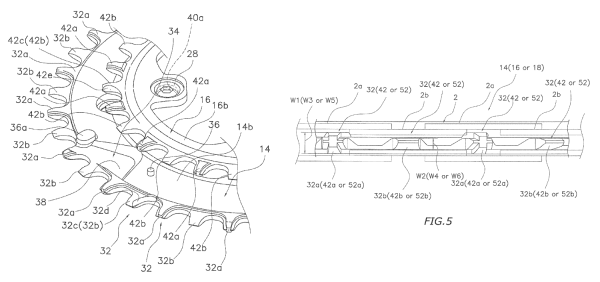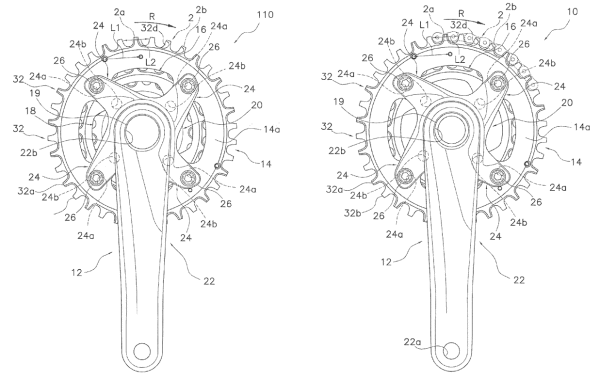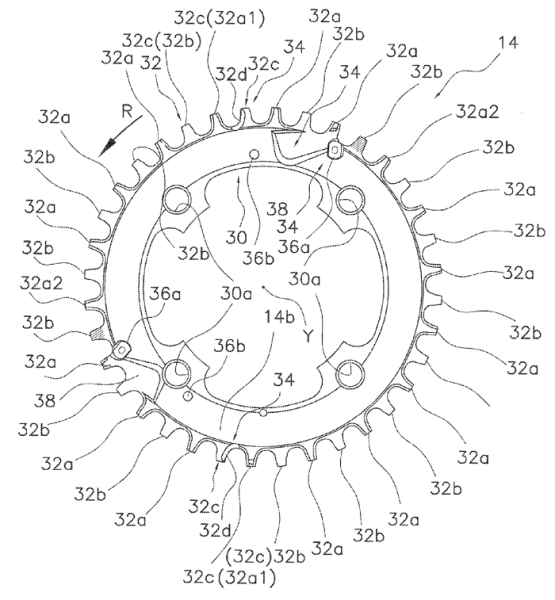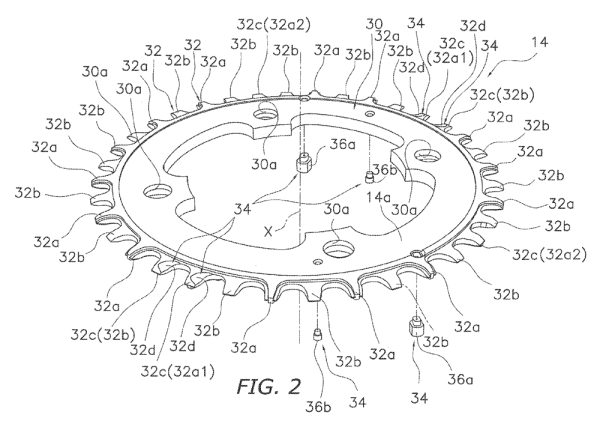With the advent of narrow wide chainring designs, we’ve gone from worrying about dropped chains to full on all mountain riding with nothing more than a bare single chainring up front keeping our chain in place. Sure, clutch-equipped rear derailleurs help, and more aggressive riders still use a chain guide on occasion. But for most of us, the alternating tooth profiles are all we need to keep things running silent and smooth.
The tradeoff, of course, is that these chainrings couldn’t be used in a double crankset since there are no provisions for moving the chain from one ring to another. Whether it was simply an assumption that it couldn’t be done or a lack of interest in better chain retention on a double (or triple, for that matter), it simple fact is it wasn’t on the radar. Now, thanks to Shimano, it is, and we’ve got some good ideas on where it could be heading…
VitalMTB first spotted the design, then we got our hands on the full patent filing thanks to an anonymous tipster. What separates Shimano’s design from standard narrow-wide chainrings are several key features: Ramps & pins, spans of teeth without the + shaped wider tooth profiles, and shaping on some of the narrow teeth. The combination of those features create “Shifting Areas” on the chainrings that make it easy for the chain to lift off one and settle onto another.
The wide teeth distinguish themselves from other narrow wide designs by using more of a + shape than a fully wider shape. The patent application mentions this is done to save weight while maintaining all of the chain retention benefits.
As the image above indicates, they’re looking at using the design for both double and triple cranksets.
Several different tooth shaping techniques appear to be key parts of the design. Among the wider teeth, some will be slightly wider than others depending on their position within or leading into the Shifting Area (see 32c below, at bottom of drawing, for example). The both wider and narrower teeth with have some with a slight wedge cut into it (32d). Among the wider teeth, the non-shifting teeth maintain a + shape, and the shifting teeth lose the inner widening strip to form a “T” shape instead. The patent specifies that these shapes are not the only ones that may be considered, with diamonds, trapezoids, triangles and hexagons also on the list.
The pins and ramps create supporting structures that help carry the chain up the inside face of the ring, spaced to allow two chain links to rest on the pins as it’s carried upward.
While it’s not shown in the accompanying images, the patent does say these designs could be used in other layouts, which makes us think 1x drivetrains. While Shimano’s current offering’s lack of a narrow wide tooth profile hasn’t stopped them from offering distinct 1x chainring setups, we’re thinking this could open up an interesting opportunity to make one ring that works for both. Imagine having a double crankset where either chainring could also work perfectly fine as a single chainring, and you could simply flip-flop it’s mounting position to gain the correct chainline. Given Shimano’s typically high chainring cost, getting one ring to pull double duty could help justify the higher cost and add versatility.
The patent app also mentions that these shapes and designs could also be used on a rear sprocket. What will be particularly interesting to see is how they manage to get the chain to stay in sync as it shifts, landing the outer chain plates on the wider teeth.
The patent application was filed back in October 2013, published in November 2014, but just showed up online recently. We’ve reached out to Shimano for comment and will update if/when we hear back.



